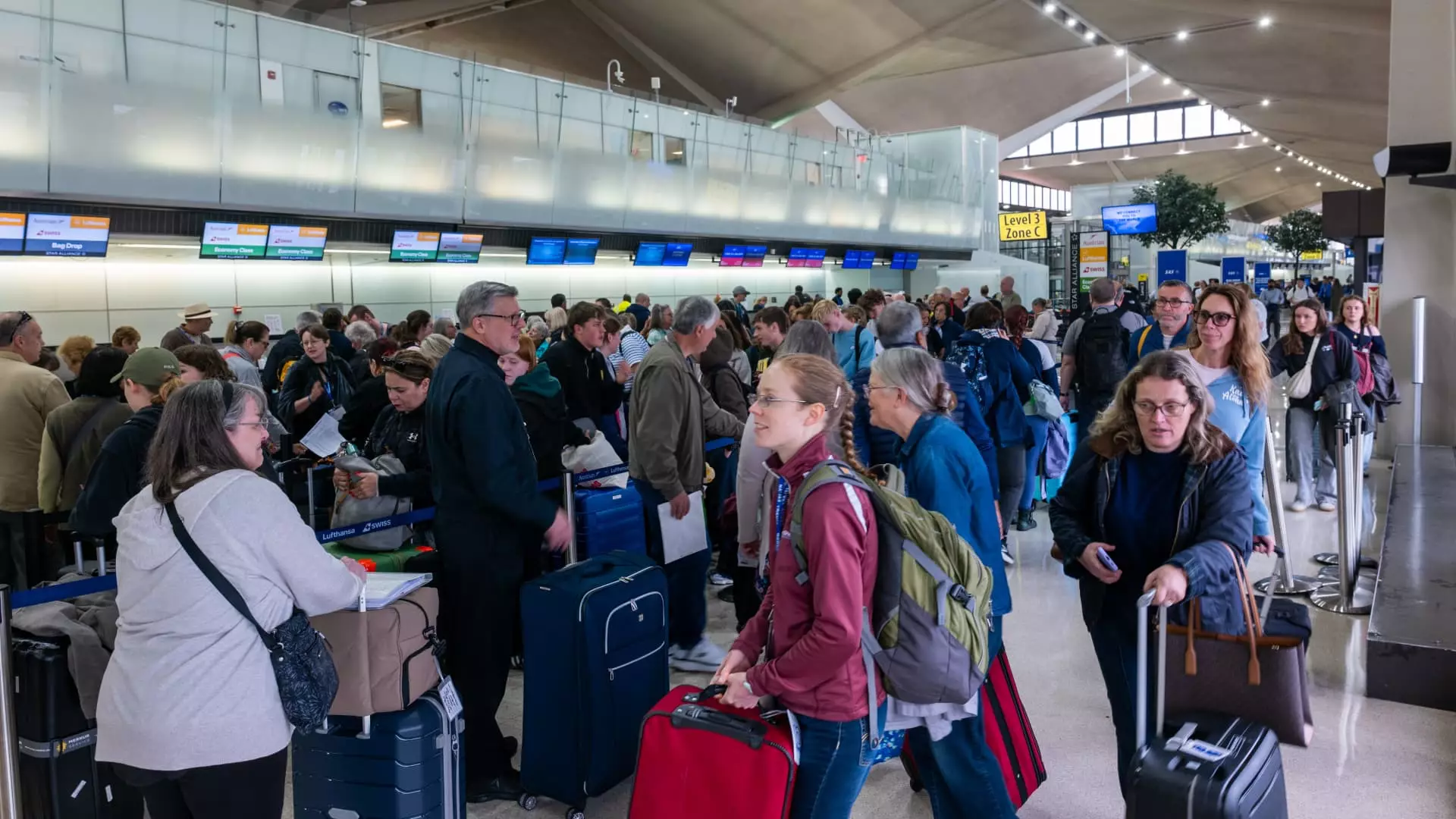Recent developments surrounding air traffic control systems at Newark Liberty International Airport have unveiled a troubling reality: our aviation infrastructure is not just aging but crumbling under the pressure of demand. On April 28, the air traffic controllers at Newark experienced a loss of contact with aircraft, an equipment failure that spiraled into more than 1,500 flight delays, a situation that exemplifies the critical state of U.S. aviation. This incident has ignited significant worries among travelers and transport officials alike about staff shortages and the technological vulnerabilities that plague the air traffic control system.
The crisis underscores a pressing issue—ever-increasing instability in aviation operations is far from a random occurrence. The national air traffic system is clearly not equipped to handle the flood of air traffic resulting from an economy bouncing back from the pandemic. Angry travelers, anxious airlines facing mounting financial pressures, and beleaguered controllers who are left to deal with the fallout are symptomatic of a romance gone sour between technology and manpower in a sector pivotal to our globalized world.
Staff Shortages: A Silent Killer
The Federal Aviation Administration (FAA)’s acknowledgment of severe staffing shortages only amplifies the urgency of addressing systemic issues within air traffic control. As controllers grapple with the fallout from the April 28 incident, they continue to face a treacherous combination of technological malfunction and significant understaffing. The reality that over 20% of Newark controllers were unable to work not due to their unwillingness but because of legitimate health concerns related to the stress of their jobs is a damning indicator of the environment they are in.
Many factors contribute to this dramatic situation, including early retirements mandated by regulations—controllers are forced out at a mere 56 years of age—leaving a gaping hole in experienced personnel. Repeated efforts by administrations to bolster recruitment are commendable, but such moves can appear as mere band-aids on a deep, festering wound. The inconsistencies in staffing have left the aviation sector vulnerable, akin to a soldier missing critical equipment on the battlefield.
Infrastructure Under Fire: The Call for Investment
Yet, it must be noted that the issues plaguing Newark are reflections of a broader deficiency in U.S. infrastructure. New Jersey’s Governor Phil Murphy recently wrote to Transportation Secretary Sean Duffy, demanding immediate prioritization of investments in air traffic technology and staffing. The Port Authority of New York and New Jersey’s investment into modernizing Newark Liberty Airport only serves its purpose if a robust federal system is in place to support it—an infrastructure overhaul that seems to be perpetually delayed.
The irony is palpable: as local airports attempt to innovate and modernize their facilities, they remain shackled by the federal government’s sluggishness in updating its air traffic control systems. It is deeply troubling that as we move towards the high-stakes environment posed by future global events like the World Cup, the fate of New Jersey’s air traffic infrastructure hangs in the balance due to bureaucratic inertia and ineffective governance.
Technology: The Elephant in the Room
Further complicating the situation is the sheer obsolescence of current air traffic control technology. The FAA’s cry for “more reliable telecommunications” is a clarion call that echoes among industry insiders and travelers alike. The system in place is increasingly ineffective against today’s congested skies, indicating that the time has come for a significant technological leap forward—a call for innovation that is not just about patching up deficiencies, but about building a resilient future for air travel.
Transportation Secretary Duffy’s remarks regarding introducing an “entirely new air traffic control system” are welcome, yet it raises questions: Why has this antiquated setup persisted? The safety of the existing system, while a point of reassurance, cannot become an excuse for complacency. These are critical times, and without action, the aviation industry could find itself overwhelmed, causing not just delays in air travel, but in prosperity and progress across the economy.
The aviation industry’s challenges go far beyond the construction of new runways or enhancing customer service. The heart of the issue lies within the way we perceive and enact change. As we prepare for the influx of passengers and revenue, one thing is clear: the time for reform has arrived. Aviation is no longer just about flying planes; it’s about ensuring that our skies remain safe and efficient for all.

